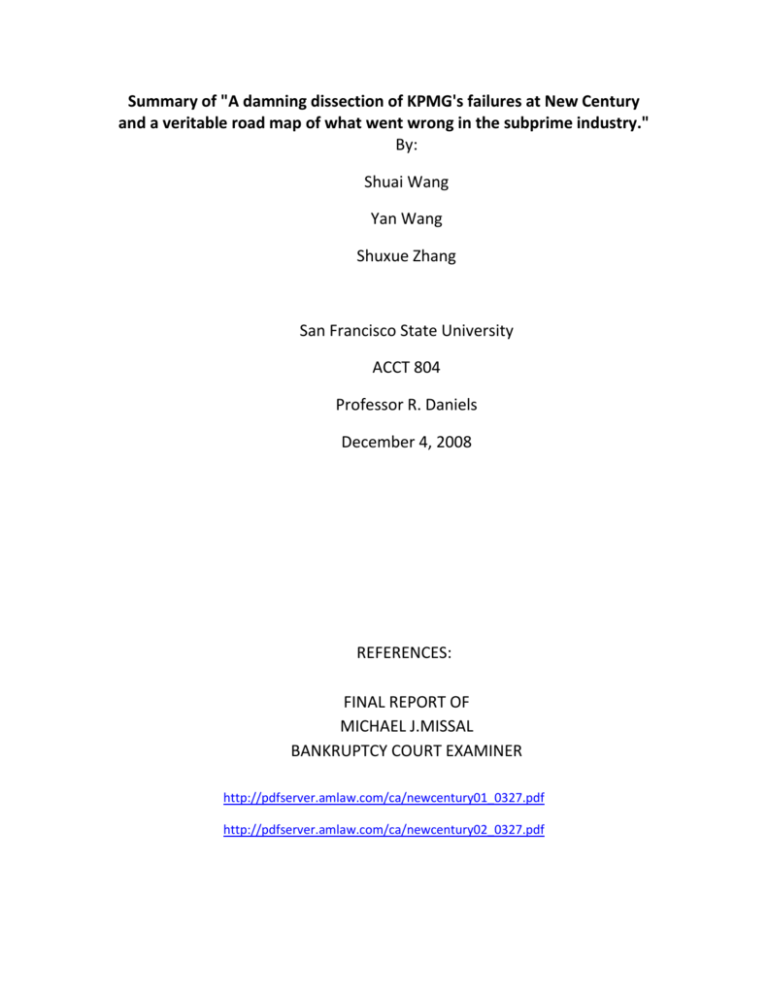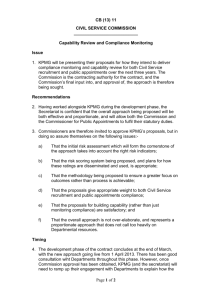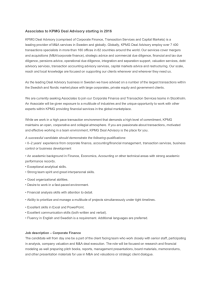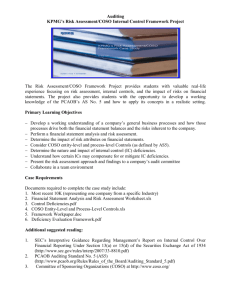Summary of "A damning dissection of KPMG`s failures at New
advertisement

Summary of "A damning dissection of KPMG's failures at New Century and a veritable road map of what went wrong in the subprime industry." By: Shuai Wang Yan Wang Shuxue Zhang San Francisco State University ACCT 804 Professor R. Daniels December 4, 2008 REFERENCES: FINAL REPORT OF MICHAEL J.MISSAL BANKRUPTCY COURT EXAMINER http://pdfserver.amlaw.com/ca/newcentury01_0327.pdf http://pdfserver.amlaw.com/ca/newcentury02_0327.pdf Background of New Century New Century Financial Corporation was founded in 1995 by a trio of former managers at Option One Mortgage, including former Chief Executive Officer Brad. New Century Financial Corporation was a real estate investment trust that originated mortgage loans in the United States through its operating subsidiaries. The company enjoyed a rapid growth since its founding, from $357 million mortgage loans in 1996 to approximately $60 billion in 2006.New Century’s Equity securities started to trade on New York Stock Exchange from 1997. In 2004, New Century changed its corporate structure to REIT for income tax purposes. As of January 1, 2007, New Century Financial Corporation was the second-biggest subprime mortgage lender in the United States, with a market capitalization of over $1 billion and credit facilities of $17.4 billion. On March 8, 2007, New Century Financial Corporation said that it has stopped accepting loan applications because some of its financial backers are refusing to provide access to financing. On March 9, 2007, New Century Financial Corporation reported that it had failed to meet certain minimum financial targets required by its warehouse lenders and disclosed that it is the subject of a federal criminal investigation. New Century Financial Corporation further indicated that it does not have the cash to pay creditors who are demanding their money. On March 14, 2007, the day after the New York Stock Exchange delisted New Century Financial Corporation, the market capitalization value of its stock was less than $55 million. On April 2, 2007, New Century Financial Corporation and its related entities filed voluntary petitions for relief under Chapter 11 of the United States Bankruptcy Code in the United States Bankruptcy Court, District of Delaware located in Wilmington, Delaware. Deficiencies within New Century According to the final report from the examiner, we listed following internal factors contributing to the bankruptcy of New Century Financial Corporation: 1. Deficiencies of Internal Control. New Century had a number of deficiencies in its system of internal controls, including not tracking the growing backlog of repurchase requests, not remediating certain control deficiencies and not having proper documentation for key financial processes. These inadequacies finally contributed to accounting and financial reporting deficiencies of New Century. 2. Release of financial statement inconsistent with GAAP. For example, New Century engaged in at least seven wide-ranging improper accounting practices in 2005 and 2006, most of which were not in conformance with GAAP. Meanwhile, New Century failed to fully disclose special accounts related to repurchase loans. What’s more, New Century failed to value properly residual interests that the company held in off-balance sheet securitizations. 3. Lack of standard for loan quality in operation. New Century adopted frequent exception to its underwriting guideline for borrowers who might not otherwise qualify for a particular loan. In addition, New Century rejected a number of qualified borrowers without complete documents, even though it was easy to fix. 4. Incompetence and irresponsibility of Senior Management. Senior Management failed to give adequate attention to the increasing risks of New Century’s loan originations as well as the increasing amounts of investor “kickouts”, and did not take appropriate steps to manage those risks and decrease investor kickouts. Failure of KMPG Auditing 1. Erroneous Advice to New Century regarding the calculation of its repurchase reverses. During the audit engagement with New Century, KPMG erroneously advised New Century to remove inventory severity and future loss severity from its repurchase reserve calculation. 2. Failure to detect a material misstatement. Although New Century used the flawed model for repurchased loans valuation, KMPG still concluded that New Century’s application of LOCOM was consistent with GAAP. Besides, KPMG did not detect material weaknesses in New Century’s internal controls regarding repurchase reserves. 3. Flawed reviews and Audits of New Century’s Residual Interest Valuation. KMPG unreasonably accepted management’s assumptions and failed to plan its audits and reviews of New Century’s residual interest valuations effectively. 4. Flawed reviews and Audits of other financial accounts. The financial accounts KMPG failed to review and audit with due care include: allowance for loan losses, mortgage servicing rights, and hedging and goodwill accounts. 5. Failure of 2005 SOX 404 Audit. KPMG did not take prior deficiencies noted into consideration when planning the audit and failed to identify control deficiencies existed in 2005 audit. Potential Legal Claims 1. Claim for professional negligence against KPMG. KMPG breached its duty of professional care owed to New Century and caused injury to the Estates. Moreover, The Estates might also state a claim for negligent misrepresentation against KPMG. 2. Claims to recover executive bonuses and compensation paid to certain officers of New Century. Based on material misstatements regarding the company’s financial performance, certain officers were unjustly enriched and they should return the bonuses and compensations that they did not deserve. 3. Claims against former New Century officers and directors for breach of duty. Certain officers and directors failed to made decisions in “good faith” and in the “best interests of the corporation”, in this sense, the estates could apply claims against officers and directors of New Century for breach of fiduciary duty. Additionally, corporate officers and directors were also held individually liable for permitting corporate assets to be wasted. Further Discussion Through the discussion of the New Century case, we conclude this particular case tends to prove the "unconscious bias" theory in the following aspects. 1. Ambiguity in Accounting and Auditing. Bias thrives wherever there is the possibility of interpreting information in different ways. 2. Attachment. KPMG have strong business reasons to remain in its clients’ (New Century) good graces and are thus highly motivated to approve their accounts. 3. Familiarity. People are more willing to harm strangers than individuals they know, especially when those individuals are paying clients with whom they have ongoing relationships. Because KPMG had performed auditing service for New Century for few years, it intended to protect its client’s right. 4. Escalations. An auditor’s biases in KPMG may lead him or her to unknowingly adapt over time to small imperfections in its client’s financial practices.





